[This post was originally published on 20th June 2021. It has been updated on 8th July 2022.]
TABLE OF CONTENTS
- Introduction
- What are drip email campaigns?
- Types of drip email campaigns
- Why send drip campaigns?
- Components of drip marketing campaigns
- Prerequisites of running an effective drip email campaign
- Important emails to include in your drip campaign strategy
- Best practices for drip email campaigns
- Wrapping up
Introduction
Remember your science class at school in which the teacher explained the concept of “drip irrigation”?
Well, if not, let me help you brush it up.
Drip irrigation serves as the most systematic method to deliver water and nutrients to the crops, thereby facilitating their optimal growth. By using this technique, you can achieve the agriculture trifecta by creating the ideal environment and nutrition system – both with perfect timing.
Now, replace the same technique in the world of marketing and we will get drip email marketing campaigns.
Drip marketing refers to a strategy that involves breaking down email communications into a series of messages known as ‘drips’ sent over a specific period of time.
Terms used alternatively for drip campaigns:
- Automated email campaigns
- Lifecycle emails
- Autoresponders
- Marketing automation
What are Drip Email Campaigns
A drip marketing campaign includes a series of scheduled, automated emails that are triggered in response to pre-defined customer activity and behavior. It provides a scaffold to engage with your customers by sending out relevant messages at the right time, thereby satisfying the marketing triad.
Here’s a flowchart to demonstrate how drip email campaigns work.
Choose the right drip email marketing tool that would best suit your industry, business size, and type of products you deal with. You can use Mailchimp drip campaign or HubSpot drip campaign as they are among the most popular tools for businesses worldwide. If you are a small business, Convertkit is one of the best drip marketing tools.
Mid-sized businesses might opt for something like SendPulse, as this platform provides bulk email automation along with several other marketing channels.
On the contrary, more advanced drip marketing tools like Marketo and Salesforce are more suitable for large businesses, agencies, or enterprises.
Types of Drip Email Campaigns
There are two distinct types of drip email campaigns.
Cold Drip Campaigns
When you send out drip marketing emails to cold leads in order to increase their sales-readiness, it is known as a cold drip campaign. These emails are deployed to smaller email lists that are pre-generated by the lead generation team. You can send these emails based on triggers like email opened or links clicked-through.
Cold drip campaign examples are reminders, event invitations, educational content, and follow-ups.
Warm Drip Campaigns
Warm drip campaigns, on the other hand, can be sent to a bigger audience including registered users or existing customers. They are tailored according to the user’s interaction with the company and other information obtained through the sign-up form. You can hyper-personalize the drip email templates by using advanced variables and triggers.
Why Send Drip Campaigns?
Drip email campaigns come with a plethora of advantages if done right. Here are some of the reasons why it is worth investing in a drip email strategy.
1. Drip email campaigns help to enhance subscriber engagement and loyalty.
As drip email marketing campaigns are triggered according to the user actions, they will be more relevant to the readers.
For instance: If someone has signed up for a free trial of your service, you can send out a series of ‘drip emails’ to let them know how they can use it to the maximum potential.
You can also send out different resources in the drip email templates that would be useful to the new users. It is a good idea to formulate a sequence of welcome email series to lay down a powerful foundation of drip email campaigns.
2. Drip campaigns are well-aligned with the buyer’s journey.
Drip campaigns form an indispensable part of the inbound marketing strategy. You can set targeted drip email automation according to the buyer’s journey and the level of purchase intent.
While cold-emailing can be valuable sometimes, it is often seen as an interruptive kind of marketing. Drip emails, on the other hand, are somewhat anticipated by the user as they are consent-based.
Here are some instances in which drip emails can be useful.
Suppose a user is in the awareness stage. It makes more sense to send emails that would let them know about your offerings and demonstrate the usage of the products or services.
On the other hand, if they are in the consideration stage, send out a series of drip email campaigns that build trust and facilitate their decision-making process. Emails with case studies or customer testimonials work the best for such users.
For users in the decision stage, the drip email automation should include the pricing and different offers that would persuade them to make the purchase.
Once they have made a purchase, you can deploy drip emails that would let them know how other users have benefited from your products or services. It is also possible to upsell and cross-sell related products in these emails, thereby boosting your customer retention rate.
3. You can create a lead nurturing marketing funnel with drip emails.
Chet Holmes Pyramid suggests that only 3% of your prospects are buying now, 6-7% are open to making the purchase, and 30% are not thinking about it. The remaining 60% either know that they are not interested or don’t think they are interested.
In other words, only 10% of the prospective clients are willing to purchase from you.
To get these leads to convert, you must use drip campaigns to maintain a continuous and well-planned flow of communication to address their concerns. These emails work like sales pitches with useful content, sent over time.
4. Drip campaign emails can increase brand awareness.
Sending a sequence of relevant drip marketing emails will keep you at the top of the subscriber’s mind and give a leg up to your branding efforts. In other words, when a customer is looking for something that you offer, they will think of your brand and reach out to you. Also, they will let their friends and family know about your services, which will, in turn, improve your word-of-mouth marketing.
Drip emails enable your business to build stronger relationships with your prospects as well as existing customers. They will be more likely to trust you and choose you when they are ready to make the purchase.
5. Automated drip campaigns can re-engage unengaged subscribers
With the help of a series of drip campaigns, you can reach out to the dormant leads and try to revive them. It is natural that some customers will go inactive and stop engaging with your emails. Re-engagement emails come into play here. Let the subscribers know that you value their association with your brand and share the latest updates that they might have missed. Promote the social media marketing channels and give them an option to interact with other platforms except for email. In addition, you must also allow the users to set their preferences by sharing a link to the preference center.
6. Triggered cart abandonment emails can recover the lost customers.
ECommerce store email marketers can take the help of cart abandonment emails to bring back the cart abandoners and encourage them to complete the purchase. Send a series of such reminder emails that will draw the subscriber’s attention and pique their curiosity. Design these emails in such a way that the customers return to your website and complete the checkout process.
You can use similar types of emails to bring back people who have searched for a specific product but not added anything to the cart. These messages will fall under the category of browse abandonment emails.
Components of Drip Marketing Campaigns
1. Triggers
The events that set your drip marketing campaigns rolling by adding a new lead to your pipeline or pushing the lead forward in the funnel. The type and triggers will be different for every business and industry.
The most commonly used triggers for drip campaign emails are:
- When someone signs up to your email list
- When you get a new lead
- When a prospective client leaves the website with an abandoned cart
- When a user creates an account in your online store
- When a client downloads a resource from your website
2. Conditions
While triggers set the drip campaigns in motion, conditions help to get started with the engagement actions. Simply put, the customer must meet some predefined conditions so that the engagement actions get activated. You must define the conditions at the outset itself when you are planning out the drip campaign emails.
Conditions can look something like this:
- Send an email when a lead has clicked through a link in the email.
- Wait for 24 hours after the cart is abandoned, and then send out the first email of the cart recovery series.
- Send the first re-engagement emails 30 days after disengagement.
3. Actions
As we are talking about “drip email marketing”, actions are limited to emails. However, you can use push notifications, text messages, or social media messages to engage the users and connect with them.
Prerequisites of Running an Effective Drip Email Campaign
Running a drip email campaign is all about setting the right conditions and triggers to send relevant emails that will resonate more with the users.
Here are 5 easy steps that will help you build a powerful drip campaign strategy.
1. Define the target audience.
Understand your target audience and create customer personas to determine who they are, what kind of challenges they are facing, and their interests or preferences. Accordingly, you can segment them into different lists and send out more impactful emails, tailored according to their persona.
Segmentation is the key to creating effective drip marketing campaign.
In drip email marketing, there are two types of trigger-based segmentation.
i. Action-trigger based segmentation
This type of segmentation considers the type of interaction of the users in order to divide them into segments.
For instance: Transactional emails informing the user about shipment status fall under this category.
ii. Demographic-trigger based segmentation
In demographic-trigger-based segmentation, you have to track the customer’s behavior and propel them towards conversion. It considers aspects like past purchases and cart abandonment to send out the drip emails.
2. Set the goals of your drip email campaigns.
According to your business type and industry, you must set SMART goals for your drip campaigns.

Setting clear SMART objectives will enable you to formulate the action plan to achieve them.
As an instance: You might want to persuade the customers into making the purchase through the drip campaigns or simply nurture them and build a stronger rapport. You can use different types of drip emails to achieve independent goals.
3. Draft your emails.
After you have defined the target audience and goals, you must create emails that would meet the marketing triad of delivering the right message to the right person at the right time. Your email must instantly connect with the user and prompt them to take the next action. What do you want your subscribers to do after reading the email?
- Do you want them to visit your website and download the content resource?
- Do you want them to check out the new features of your product?
- Do you want to promote your YouTube channel and get more subscribers?
Based on the answer, you must draft a series of engaging emails with actionable CTA and suitable visuals. But, if writing content for the emails is a worry. Then, there are tools in the market like the AI Email Writer to ease the process. This will help you quickly wrap the leads to your prefered CTA and boost conversions.
4. Chalk out the campaign workflow.
Once you have the drip campaign emails ready, you must make sure that they go along with the flow. They must foster continuity of communication with the customers. Plan out the emails such that they are in line with the user’s interests and goal of the campaign.
Take a look at this checklist to understand better.
- Determine the number of emails that will be deployed in the campaign.
- Set the frequency and timing of the emails.
- Order them properly so that they guide the users to take the action.
- Keep the emails aligned to the triggers.
- Figure out how you will analyze the results of the email campaign and the metrics to be considered.
5. Get your campaign going.
After you have everything in place and you have tested your drip email workflow, you must schedule the emails. It is advisable to have a powerful CRM tool so that you can automate the entire process of drip email marketing. With such CRM or drip marketing tools, you will be able to streamline the process of segmentation, email scheduling, and retrieving email analytics reports. If you go for tools like Marketo or Salesforce, you will also get features like lead scoring and predictive analytics to make the campaigns even more effective.
6. Optimize the campaigns based on the results.
Keep a close eye on the metrics and accordingly optimize your email campaigns for best results. According to the purpose of your drip campaigns, decide the metrics that would matter the most to you. For example: If you want your emails to drive conversions, the click-to-conversion rate will be the most important metric to track.
Many marketers map out the drip campaigns and then forget about them. That’s a huge blunder. You must constantly monitor the analytics and make necessary changes as and when required.
Important Emails to Include in Your Drip Campaign Strategy
Considering the goal of your business and the industry it belongs to, you can have different messages in the drip email strategy. Let’s take a look at the most extensively used drip campaigns in the world of emails.
1. Welcome Emails
When a subscriber has just signed up to your email list, they are most likely in the awareness stage. You must introduce your brand and the products or services you have got to offer. Let the users know your company’s strengths and send out educational content that would move them forwards to the consideration or decision stage. Include a series of three to five welcome emails to leave a profound impact on the subscriber’s mind.
It is a great idea to include social proof like customer testimonials or case studies in these emails. You can even offer an incentive or free trial to increase the possibility of conversion. If you are in the SaaS or B2B sector, you can curate your most popular content resources in the welcome emails.
Let me share two different examples – one for the eCommerce sector and another for the B2B industry.
Office sends out three emails in their welcome series.
The first one welcomes the subscriber and shares the USPs
The next email in the series displays the bestselling products to the new subscribers.
The last email in the welcome series attempts to get the subscriber’s birthdate in order to wish the subscriber on their special day.
You can even have a drip email campaign for such occasions.
The first birthday email can be sent out a week prior to the D-day. It will make the subscriber feel special and let them know that you are not just another name in the contact list.
Send out the second email on the birth date. Wish the subscriber and include special discount offers that would tempt the birthday boy/girl to splurge and make the purchase.
Extend the birthday offer and send out the third birthday email three to four days after the big day.
2. Lead Nurture Campaigns
Considering the Chet Holmes Pyramid, it is of utmost importance to send out lead nurturing email campaigns to make the leads sales-ready. These automated and personalized emails are built with the help of analytics, user data, and their interaction with your brand.
With the help of lead nurture campaigns, you can influence decision-making and make the users more inclined to purchase from you. You can stay connected to the leads who are not ready to make the purchase at the moment and win their confidence till they are finally ready. Just make sure that you personalize these communications so that you do not come off as desperate or pushy.
Let me present one of the best b2b drip campaign examples.
Last month, I signed up on Buffer to streamline the social media marketing for my business. As soon as I signed up, I received a welcome email that introduced their basic offerings to me.
Over the course of the next few days, they sent me personalized emails that helped me to use the platform in the perfect way.
In one of the drip campaign emails, they also shared their Instagram handle to boost social media visibility and get more followers.
eCommerce marketers can also use this tactic to yield conversions as Birchbox does.
Birchbox sends out different offers to woo their customers and tempt them to purchase the subscription.
3. Abandoned Cart Emails
Online shopping has become such a craze in recent times. Even if we are not looking forward to buying anything, we simply add items to the cart and then forget about it. The same goes for your customers too. It is one of the most unfortunate events for any eCommerce marketer.
But you can recover some of these customers by sending out a series of cart abandonment emails. Set these automation drip campaigns to gently nudge the customers to complete the checkout process. Remind them of the awesome product that they have left behind. You can even incentivize them with a discount offer. Alternatively, you can tap on the FOMO instinct by creating a sense of urgency. Use phrases like “Hurry up”, “Offer valid till stocks last”, “20% OFF only for today”, and “Time is running out”. You can even use a countdown timer to further amplify the FOMO effect and generate instant conversions.
Wayfair has nailed its cart abandonment drip campaigns with four well-designed emails sent over a period of 16 days.
The first email is sent 1 hour after the cart abandonment. It not only includes the image of the abandoned product but also a catalog of popular products and limited-time deals.
The next email is sent after 24 hours of the cart abandonment and follows the same theme as the first one.
The third email is sent out 12 days after the user abandons the cart. The headline is drafted in such a way that it draws the subscriber’s attention and brings them back to the store.
Sent after 16 days of cart abandonment, the last email of the series creates a sense of urgency by using the headline: “Only 8 left!”.
The top picks shared in the email are complementary to the product added in the cart, which will increase the likelihood of cart recovery.
Like cart abandonment emails, you can send out browse abandonment email campaigns too. These emails can be sent whenever someone searches for a particular product but does not add it to the cart.
Here’s how Amazon does it.
It also applies when the user downloads a resource but does not take any action even after several days.
4. Confirmation Emails
After you have closed the sale or persuaded a customer into renewing the subscription, you can send out a sequence of drip emails to confirm the transaction and thank them. You can also use these emails to upsell and cross-sell related products or services that complement the previous purchase.
Calendly sends the perfect B2B drip campaign examples. They deploy a series of emails after a user signs up for their free trial.
In the first drip campaign template, they thank the users for trying out Calendly and share the commonly used features.
In the second email, they showcase the different event types and a link to customize the settings.
The next email informs the user about their mobile application that would make scheduling calls easier for them.
Once you are done with the “confirmation” drip email campaigns, you can send out post-purchase emails to boost brand loyalty. Ask for the customer’s feedback and incentivize them for their review and valuable time. Some brands even use these emails to share useful tips that will help the customers use the product to its best potential.
Take this opportunity to appreciate the customer’s association with your brand and invite them to join your VIP program. You can even promote the referral marketing strategy and acquire new customers for your business.
See how Carnival Cruise Line has promoted their VIP program in the drip campaign template and highlighted the perks that it comes with. Such emails will help you get repeat purchases and build a loyal customer base. It will also enhance the word-of-mouth marketing for your business and help you acquire new customers.
6. Newsletters
Newsletters can serve to engage the customers and keep your brand on the top of their minds. If you are targeting the current customers, you can send out details about the VIP program or how to earn referral rewards by bringing new customers to the business. These newsletters can also include the latest articles or curation of the best blog posts in the industry.
As far as prospective clients are concerned, you can highlight interesting business updates and user-generated content that would pique their curiosity and make them purchase from you.
If you are using ConvertKit for your business, you will be familiar with such newsletters that they send.
Through these emails, they share valuable content resources like how-to guides, product updates, and the latest stories relevant to the readers.
They also use newsletters to introduce new product features and enhance subscriber engagement.
7. Recommendation Emails
Retaining customers is imperative if you want to bring a steady flow of business revenue. Recommendation emails go a long way in getting customers back to your store, thereby encouraging them to convert.
For example: Suppose your eCommerce store deals with kitchenware. If someone has purchased a crockery set from you, you can send out a recommendation email promoting a dinner set or dining table cover or other similar products.
Such recommendation emails will let your customers know about suitable products that they would be interested in.
Take a look at this order confirmation email that shares three product recommendations with the customers.
Platforms like Shopify, Netflix, and several other brands use recommendation emails to keep the users hooked to their brand and continue using the services they offer.
8. Re-engagement Emails
Some friendships and relationships fade away with time. Just like that, some customers will lose interest in your brand and stop engaging with your emails over time. To win these customers back and prompt them to purchase again, re-engagement emails work the best.
Send out a series of three to five re-engagement emails to get the customer interested in your offerings once again.
Take a look at this re-engagement email series by Simpl.
In the first email, they have offered a certain cashback while the next email promotes a bigger cashback amount. Such ladder discounts would entice the customers to make the purchase.
Also, did you notice how they have created urgency by letting the subscriber know that the offer is valid for the week only.
9. Cold Emails
Do you receive promotional InMails on LinkedIn that share some random product or service that you are least interested in?
That’s exactly what cold emailing is all about. It is a part of outbound marketing strategy in which the lead generation team creates a list of prospective clients who might be looking for something that you offer. These emails would only work if you carry out proper profiling of the prospects and then approach them with relevant messaging.
Cold drip emails can be used to:
- Share content resources with relevant audience
- Find affiliate marketers and new partners
- Connect with industry influencers and thought leaders
- Invite speakers and attendees to events
- Send webinar invitations to people who might be interested in your niche
- Offer a free trial or demo of your product or services
Suppose you want to invite a speaker to your webinar.
Here’s how your cold drip email campaign flow will look like:
Day 1: Introductory email
Personalize the email as much as possible. Your email must reflect that you have researched well and use a persuasive tone.
Introduce yourself and invite them to speak to your webinar.
Also, let the reader know “what’s in it for them”. It must be convincing enough to get them interested and hit the reply button.
Day 3: Follow-up email
Our life is busy and the digital world, full of distractions. It is pretty obvious that the reader might forget to reply even if they are interested. Send out the follow-up email to remind the prospect about your previous email. Ask them if the date and time is convenient to them and offer to change it for their convenience.
Day 6: Follow-up + Ask if something else needs to be worked on
In case you have not received a reply even after 6 days, ask the reader if there is something else that needs to be worked on. Ask them if they can get on a call to discuss further. Share your Calendly link if you think that would make things easy for you.
Day 10: Goodbye email
This is the last and final attempt to receive a reply. Politely, let the prospect know that you would not reach out to them after this email. Request them to contact you if they change their mind or have any questions about the event.
You can invest in premium tools like Mailtrack to monitor whether the user has opened the email or not. This will help you to plan your future emails better.
Best Practices for Drip Email Campaigns
1. Segment your customers and personalize your emails
As cliched and obvious as this sounds, you must segment your customers in order to create tailor-made drip campaign examples. Relevance is the key to building a winning drip email campaign strategy. The customer’s journey should be considered as an important aspect while planning drip campaigns. Identify the customer’s pain points and fine-tune your drip marketing campaign accordingly. Doing so will help you strengthen the relationship with the customer and bring optimum results from the emails.
2. Maintain a consistent send cadence
Sending too many emails will most likely annoy the customers or leave them bored. Therefore, you must set your email workflow in such a way that it does not get too overwhelming for the reader. There are so many brands that send out an email every day. I strongly feel that this is absolutely unnecessary. You can send out emails twice or thrice in a week. That would be enough to keep them engaged with your brand.
For example: Really Good Emails sends out two emails in a week and I literally look forward to their emails.
Alternatively, you can let the subscribers set their email frequency preferences so that you are spared of all the guesswork and trial-and-error methods.
Some brands include a disclaimer in their welcome emails about their send frequency. I guess that’s a pretty good idea too.
3. Abide by the email copywriting best practices
Try to provide maximum value to the readers through your emails. Keep the copy short and to-the-point. Follow the Problem-Agitation-Solution formula to make the email engaging for the readers. Share a story that would intrigue the readers and connect with them on a personal or emotional level. Get rid of all the technical jargons in the emails and use a copy that’s as easy as ABC.
Use the Hemingway App editor to make sure that your email is understandable for all subscribers. Bullet points, numbered lists, and separators can be used to enhance the email readability.
Besides the copy, be careful of the kind of visuals you are using. Too heavy images will slow down the email loading and ultimately hamper the deliverability rate.
Your CTA must be clearly visible and actionable. The color of the CTA button must be in contrast to the rest of the email.
4. Connect your email marketing with other channels
Drip email campaigns cannot perform well in a siloed setup. You must make sure that your marketing channels impart a consistent experience to the readers. Let the subscribers know about your social media presence and promote similar content across all these channels. Strive to create an omnichannel marketing experience with your copy, tone of communication, and the design elements.
5. Always test and A/B test your campaigns
Calibrate your email campaigns by carrying out A/B testing. Send two variants of your email campaigns to determine what strikes the right chord with the subscribers. This is important because your customer preferences are constantly changing. What worked well a month before might not work today.
Testing your emails for proper rendering is another best practice that cannot be overlooked. Your emails must look good, regardless of the email client and screen size they are accessed on. I can vouch for testing tools like Litmus and Email on Acid as they provide detailed rendering reports including email accessibility reports.
Wrapping Up
Look at your drip email campaign strategy as a journey and conversions as the destination. The email campaigns you send should be placed at the right junctions at the right time so that the subscriber can reach the destination. In other words, sending out useful emails at the optimum timing is the foundation of powerful drip campaigns.
If you need help with setting up drip email campaigns or creating pixel perfect designs for the same, Email Uplers can help you out.
Just reach out to us and we would love to assist you. Whether you are using Mailchimp drip campaign or HubSpot drip campaign, we have specialists who can cater to all your needs.














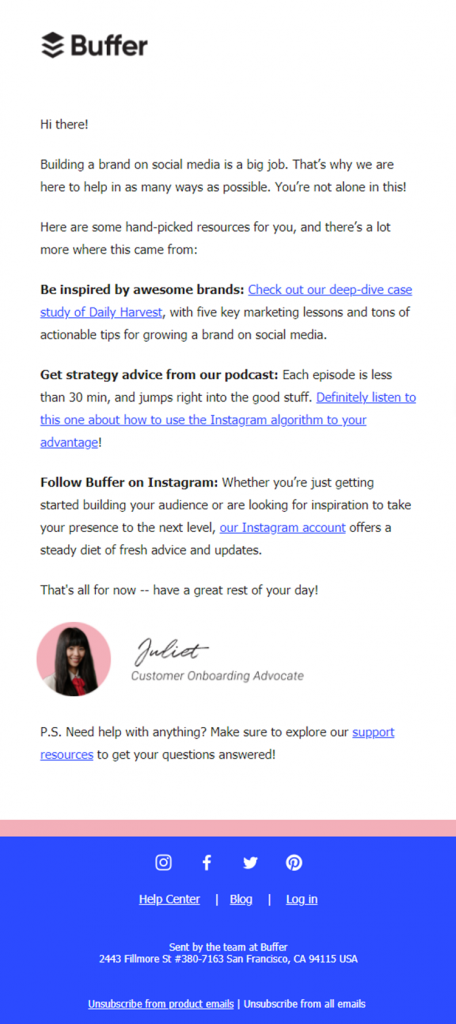
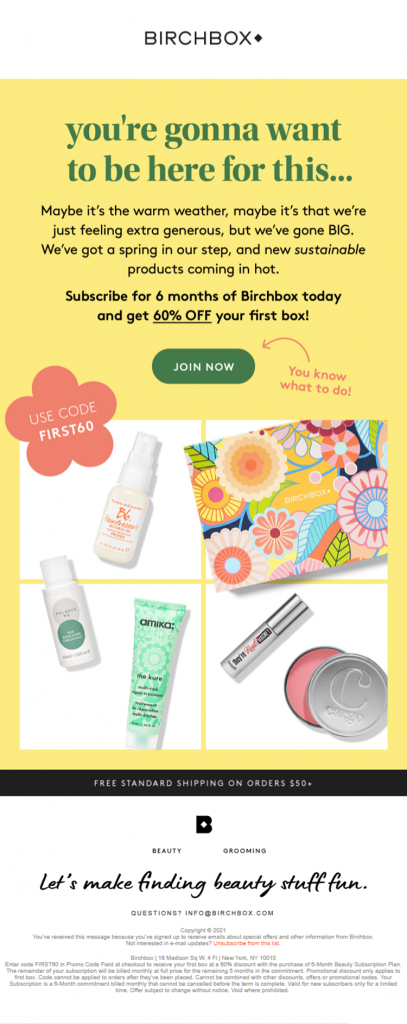
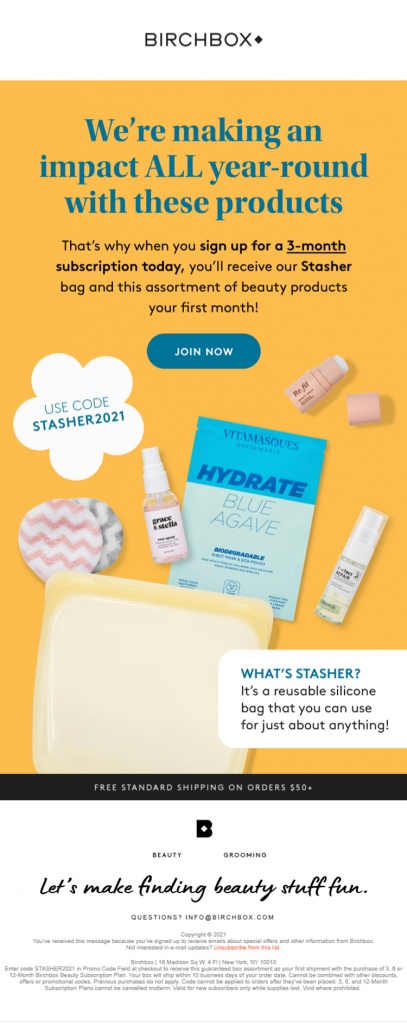

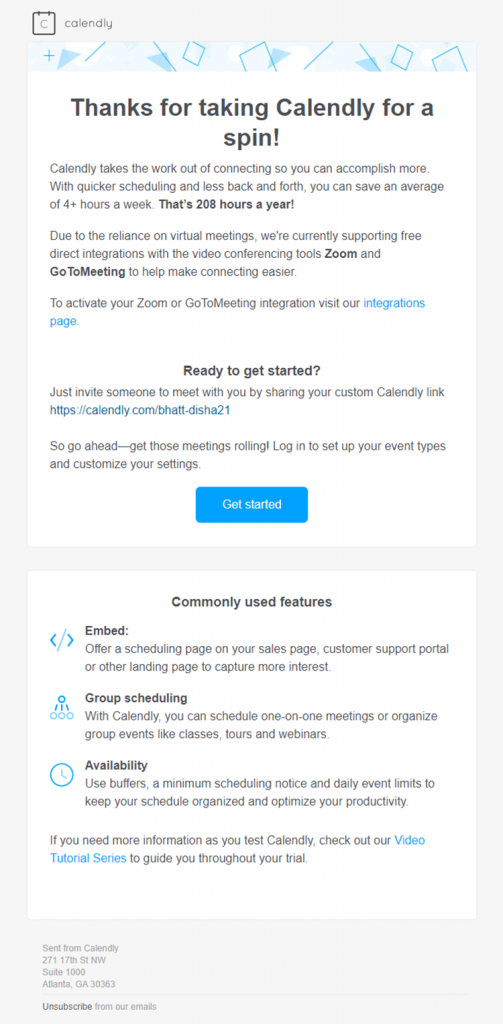

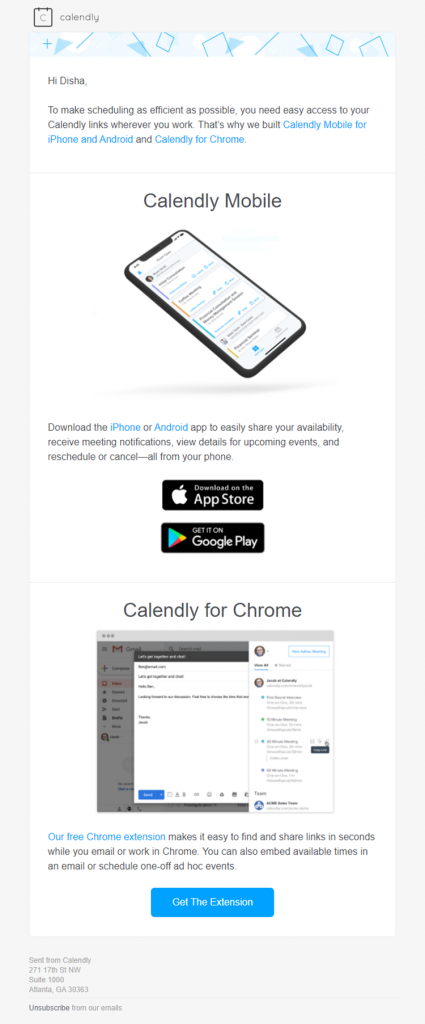







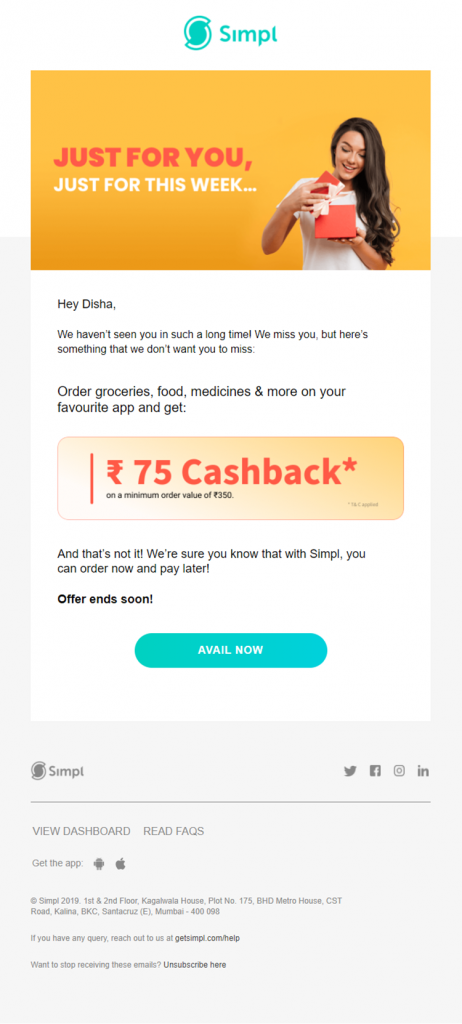

Disha Bhatt (Dave)
Latest posts by Disha Bhatt (Dave) (see all)
A Brief Guide to Abandoned Cart Emails in Salesforce Marketing Cloud (Includes Cool Tips and Strategies)
How to minimize Landing Page Bounce Rate and Maximize Conversions